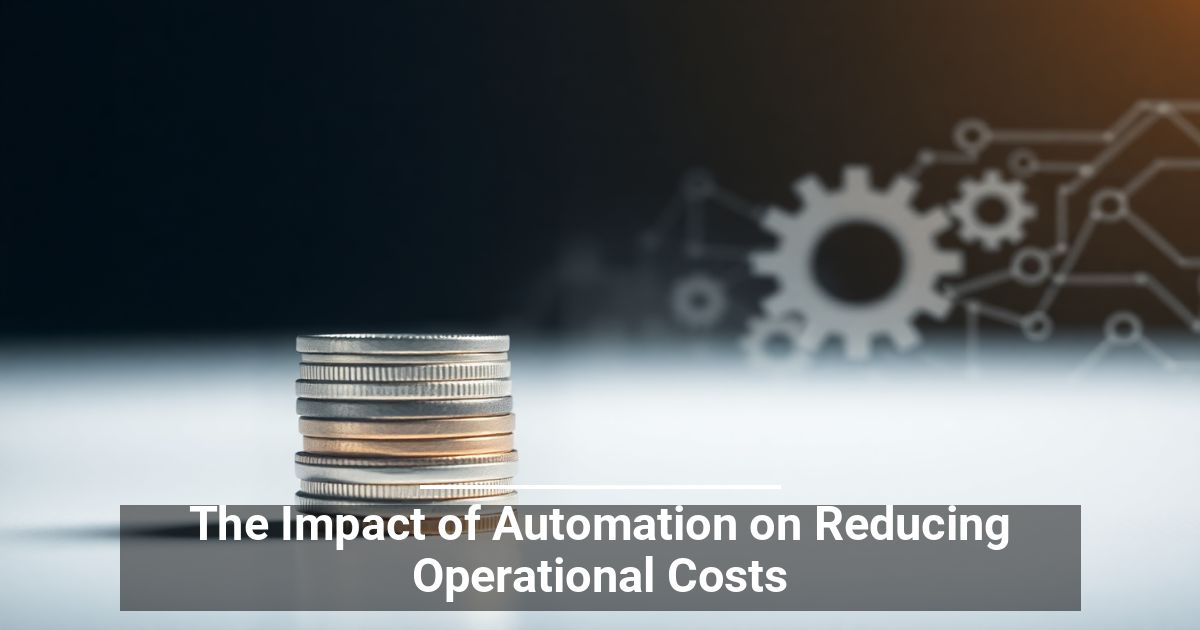 Is your establishment spending too much on daily operations? By replacing bogged-down manual processes with advanced systems, you can free up time and resources for more strategic work. Learn more about automation reducing operational costs here.
Is your establishment spending too much on daily operations? By replacing bogged-down manual processes with advanced systems, you can free up time and resources for more strategic work. Learn more about automation reducing operational costs here.
What Is Intelligent Automation?
Every industry, from healthcare to retail, deals with spiking day-to-day expenses, and a primary driver is the refusal to change sluggish workflows.
Many traditional businesses still rely on hands-on practices, manual data entry and analysis, and constant handoffs. This often results in production delays, overstocking or stockouts, and an overworked human team that's more prone to errors.
That's where workflow automation comes in. From sophisticated machine learning models for reviewing data to robotic systems that finish physical tasks at record speed, these technologies transform an otherwise obsolete setup and make it more competitive in today's fast-paced, digital world.
Incorporating Workflow Automation for Your Business
According to a Gartner report, companies can expect automation to lower expenses by 30%. For example, a business with an annual revenue of $1.5 billion may save $45 million yearly when it properly implements this technology.
Automation reducing operational costs can come in various forms, including:
Artificial Intelligence (AI)
We live in the age of big data, where information grows and changes at an incredible pace. Even the brightest experts can't process it all fast enough, so you need automation to bridge the gap.
Advanced AI analytics takes vast amounts of raw data and transforms it into more digestible patterns and trends. A human touch can then interpret these insights to facilitate better decision making.
Robotic Process Automation (RPA)
Whether it’s processing invoices in finance, managing inventory in retail, or updating patient records in healthcare, every business has those tedious but necessary jobs that waste time and energy.
RPA handles them much more efficiently. It's a type of software that mirrors human actions to accomplish repetitive, rules-based tasks in digital systems, including:
- Entering data
- Sorting files
- Running basic applications
- Scheduling appointments
- Processing transactions
- Managing email responses
Chatbots
One of the most popular cost reduction strategies through automation technology is leveraging chatbots. Older versions of this tool felt clunky and often frustrated users.
Modern, finely tuned chatbots, however, can understand context, provide instant responses, and elevate customer experiences effortlessly. When a complex query arises, they escalate it to human agents.
Industrial Internet of Things (IIoT)
The average factory space holds many separate systems and processes, and human workers often have to monitor each one. Why not connect everything to boost operational efficiency?
IIoT creates a network of devices and sensors that communicate in real time. For example, a device can detect when a specific machine needs servicing. Predictive maintenance reduces downtime and prevents more costly repairs.
Unlocking Potential Through Process Optimization
With automation reducing operational costs, businesses can thrive in today's competitive landscape. Many technologies are quickly becoming the norm in different industries, and companies that fail to adapt risk falling behind.
Identify the most inefficient parts of your workflow, look for solutions that streamline them, and slowly implement changes.
